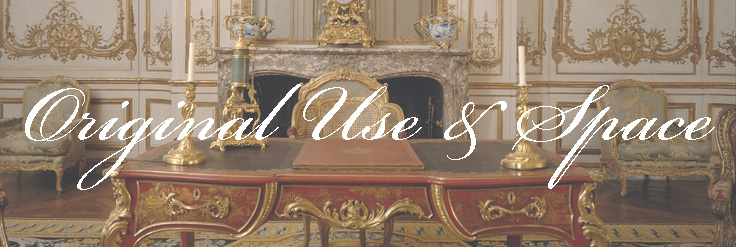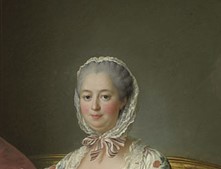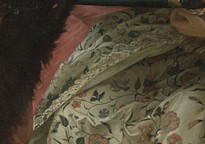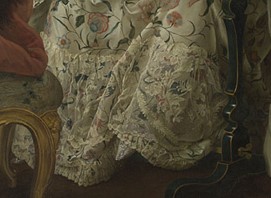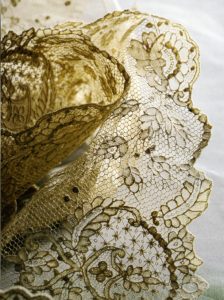There was a particular use of lace for the display of wealth and taste. The quality of the lace, the intricacy of its design and fine technique, and thus its likely expense, are immediately apparent to observers of the portrait.
During 18th century, fashionable men and women developed a favor over soft and airy material such as finely woven muslin while elaborately patterned lace continued to be worn on the most formal occasions. By the 1720s, the developed technique allowed lace makers to incorporating the soft draping qualities of muslin with lace. Lace producers either made more delicate and refined lace that resemble the softness and lightness of muslin, or put lace with muslin together. The more fine designs being the most expensive and difficult to produce. There were many major regions that produced this kind of lace, for example, those around Valenciennes. These lace producers were usually derived from those Flemish style lace production which used exceptionally fine thread. People loved the lightness and delicate appearance of lace.
Click the caption to further story.
First Four Images: François-Hubert Drouais, Madame de Pompadour at her Tambour Frame, (ca.1763-4), Bought, 1977. 4 Cropped images by Constance Zhou. Each cropped section represents the part that lace are attached to on a dress.
Last Image: Image by Professor Higonnet.
Pages
practice
